If a certain fungus is not available this year, Santa’s sleigh will be grounded on Christmas Eve, and gloom will reign at the North Pole.
Luckily for Santa, the elves, and the rest of us, the supply of Amanita muscaria, a mushroom that grows among pine and birch trees, is plentiful. It’s widely believed old Father Christmas relies on A. muscaria to get Comet, Cupid, Blitzen, and the rest of the gang into the air on Christmas Eve, thus allowing him to circumnavigate the globe in a single night. In fact, a lot of the magic we associate with the holiday season can be traced back to mushrooms.
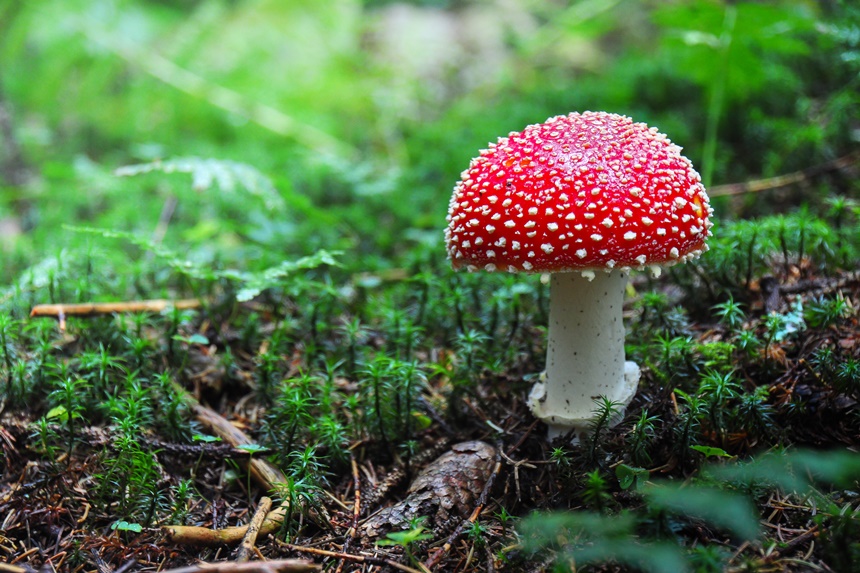
In the woods, fungi are everywhere, but we can’t see them. By weight as well as volume, the vast majority of any fungus is out of sight; mainly underground, but also in rotting stumps and logs, or sometimes in live trees. It has a “body,” or mat-like mycelium, and “arms,” or threadlike hyphae that look for neat stuff to do, like talking to trees and eating small animals.
When a fungus has plenty of organic matter to eat and enough moisture, it gets in the mood to make babies. It doesn’t browse “Timber” for a hook-up, though, or otherwise have fun reproducing. Instead, it pushes up a few mushrooms into the fresh air. These, as well as shelf-fungi on tree trunks, are called fruiting bodies, which is odd, since there’s no fruit. But there are tiny spores, lots of them, that are shed from the underside of a fruiting body and get blown by the wind to germinate elsewhere.
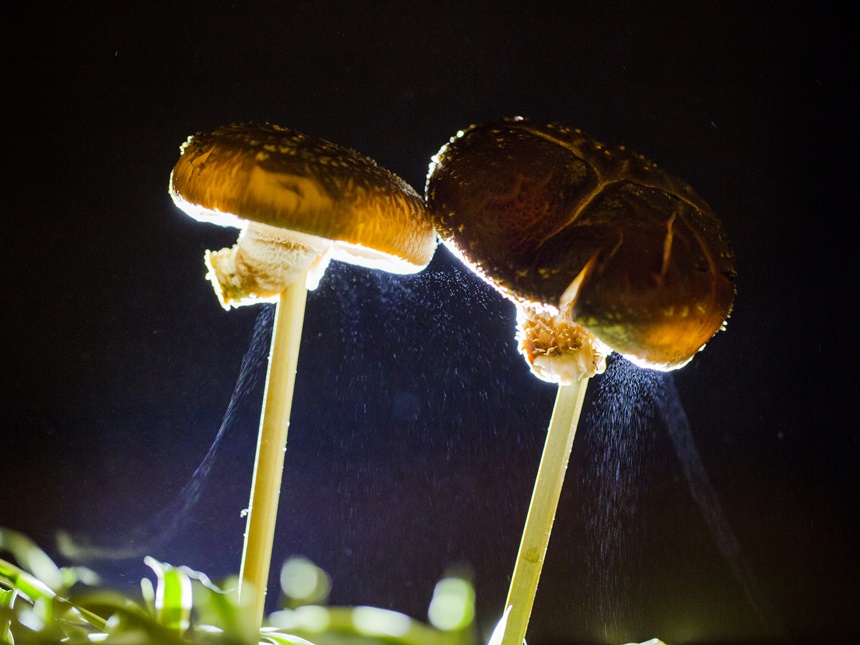
Distributed throughout North America and Eurasia from temperate latitudes to the far north, this fungus is a tree-root symbiont, taking wee sips of sap from roots, but greatly boosting their efficiency in return. The fruiting body of A. muscaria is large, with a domed cap known to get a foot or more in diameter, but that typically measures three to eight inches across. It stands between three and eight inches tall. Sporting a bright reddish cap studded with prominent white spots, A. muscaria is one of the most recognizable free-standing mushrooms in the world; it’s the big polka-dotted red mushroom of coloring books and garden statuary, and is featured in Super Mario Bros.

A. muscaria has psychoactive properties, and for millennia it has been ritually consumed by Siberian shamans. It is also eaten by wild reindeer for – well, no one is sure. Comet, Cupid, and loads of other blitzed reindeer (or caribou as we know them here) have been filmed lurching about after they’ve selectively browsed these mushrooms. Santa’s flying sleigh makes a lot more sense once you learn about this little reindeer game.
Uploaded to YouTube by BBC Studios
If the genus name Amanita rings a bell, it might be due to the fact that its close relative, the death-cap, or A. phalloides, may be the most poisonous mushroom in the world. The death-cap is native to Eurasia, but has been introduced to a few locations in North America, notably in and around Los Angeles. Its toxin is not neutralized by heat as with most species of poisonous fungi, and a fragment of its cap will ravage the liver and kidneys of an adult, making organ transplant the only “antidote.”
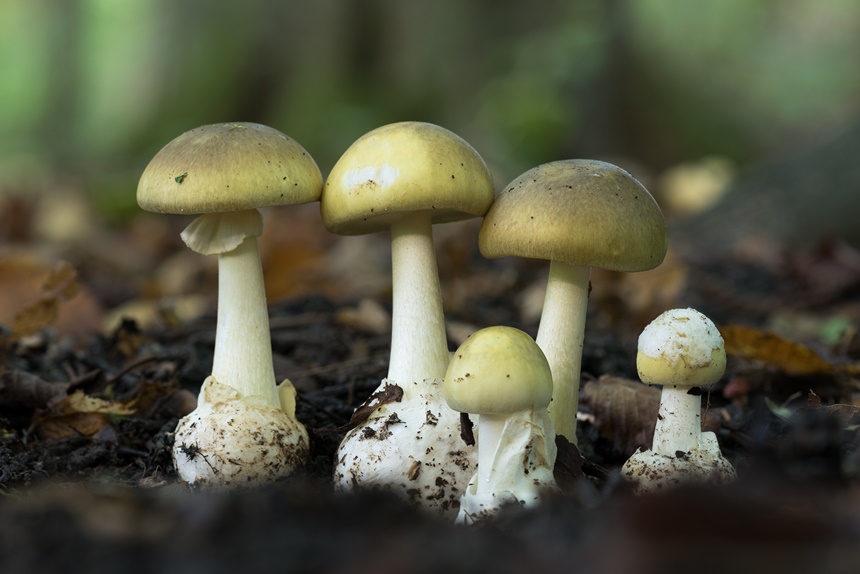
In addition to being hallucinogenic, our cheerful A. muscaria can cause intense nausea. This unpleasant side-effect can be mitigated by drying the mushrooms with gentle heat (high heat will take all the fun out of it by destroying its mind-altering properties). In Siberia and other regions, A. muscaria was often placed in stockings and hung near the fireplace to dry. This way, the moderate heat would render them (mushrooms, not stockings) okay to use ceremonially or otherwise.
Stockings full of red-and-white mushrooms hung by the chimney may sound familiar. Try an image search for “mushroom Christmas,” and you’ll find a bazillion, give or take, pictures of A. muscaria tree ornaments, greeting cards, candle holders, wrapping paper, and beyond. There won’t be a single portobello or shiitake – only A. muscaria.
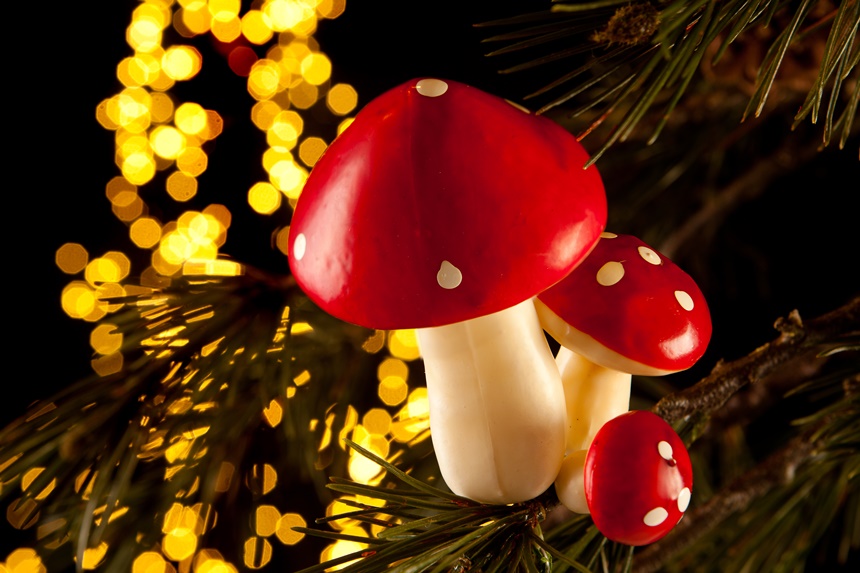
In Cheech Marin and Tommy Chong’s hilarious 1971 sketch “Santa and His Old Lady,” Cheech explains how the flying sleigh is fueled by “magic dust” that Santa gives the reindeer, and then takes it himself. Maybe it’s a reference to “magic” mushrooms – who knows?
A caution against trying this fungus yourself: Autumn-picked mushrooms can be ten times stronger than those gathered in spring and summer, and potency also varies by site. Please don’t take chances.
It’s eye-opening how many secular trappings of our modern Christmas are connected to A. muscaria. It could account for Santa’s unnatural jolliness, too. I certainly can’t think of a better explanation for Santa’s miraculous sleigh. But then, maybe the reindeer only think they’re flying.
Become a Saturday Evening Post member and enjoy unlimited access. Subscribe now
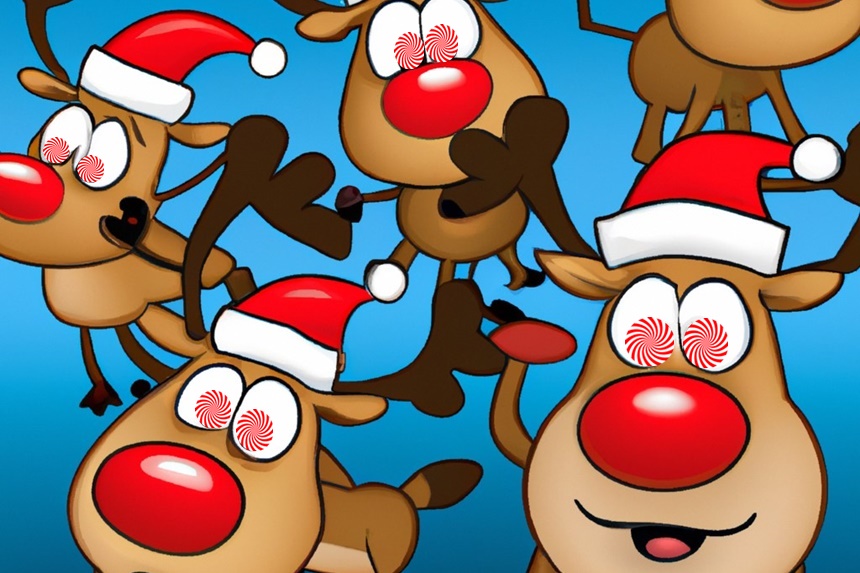

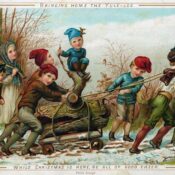

Comments
Paul, you’ve outdone yourself this week, which isn’t easy. All kidding and snickering aside, this makes perfect sense. Santa and the reindeer are getting high literally and figuratively in almost all the images we see of them. Santa’s happy and smiling when he should be exhausted, his Santa suit always perfect and too many other things to question in any kind of serious way—at all!
Any reality has to be suspended for the sake of young children and adults alike during the Holidays, every year. There’s so much stress, the imagery (even if hallucination-based), does bring smiles. Even if the reality of December 25th is to make the ending of the year’s 4th quarter profitable for corporate America, just in the Nick of time.
Thank you for including the You Tube Magic Mushrooms & Reindeer BBC video. People in their ignorance and arrogance think “they’re the only ones” looking to get high, when animals seek it out as much, if not more, and are able to find quite a bit in their natural habitat. The video, especially starting at the 1:06 mark, makes it quite clear why they do.